Table of Contents
The Brazilian flag, also known as the flag of Brazil, holds a significant place in the nation’s history and culture, representing the Brazilian identity and heritage. With its distinctive colors and meaningful symbolism, the flag stands as a powerful symbol of unity and pride. In this article, we will delve into the intriguing aspects of the Brazilian flag, exploring its design, historical background, and the symbolism behind its elements.
The Brazil flag consists of a green field with a large yellow diamond in the center, containing a blue globe with 27 white five-pointed stars arranged in the shape of the Southern Cross constellation, along with a curved white banner inscribed with the national motto “Ordem e Progresso” (Order and Progress). The flag’s colors and elements hold deep symbolic meaning for the Brazilian people, reflecting the nation’s values, aspirations, and historical significance.
Brazil Flag: Colors and Symbolism
- The flag of Brazil features a green field with a large yellow diamond in the center.
- Inside the diamond is a blue globe with 27 white five-pointed stars arranged in the shape of the Southern Cross constellation.
- The green field represents the lush forests and natural resources of Brazil.
- The yellow diamond symbolizes the wealth and resources of the nation, particularly its abundant gold reserves.
- The blue globe with stars represents the night sky over Rio de Janeiro on November 15, 1889, the date of the proclamation of the Brazilian Republic, with the stars arranged to depict the Southern Cross constellation, a symbol of Brazil’s geographic location in the Southern Hemisphere.
- The white banner with the national motto “Ordem e Progresso” (Order and Progress) reflects the nation’s commitment to social order and progress.
Flag of Brazil
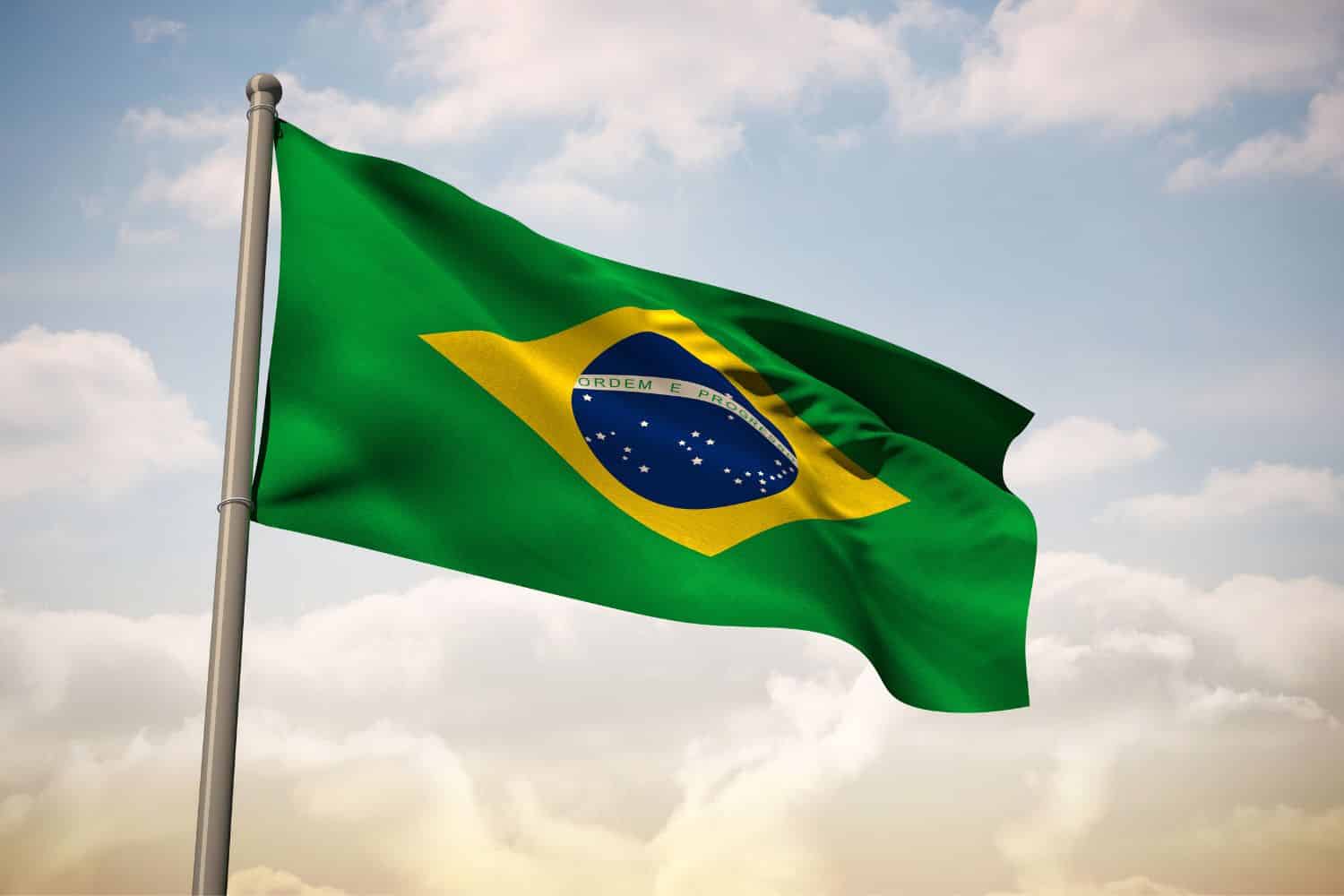
The flag of Brazil stands as a potent emblem, symbolizing the country’s vibrant culture and spirit. The design features a green field with a yellow diamond in the center, inside of which sits a blue globe with 27 white stars arranged as the night sky over Rio de Janeiro and a white band with the national motto. The green represents the lush forests of Brazil, emblematic of growth and hope, while the yellow diamond symbolizes the country’s wealth in gold and natural resources. The blue globe with stars reflects the Brazilian sky and the celestial aspirations of its people.
The white band across the blue globe carries Brazil’s national motto, “Ordem e Progresso” (“Order and Progress”), advocating the nation’s ongoing pursuit of improvement through structured progress. The 27 stars on the flag correspond to the celestial constellations seen from Rio de Janeiro on the night of November 15, 1889, and represent the union of all states in Brazil and the Federal District.
Officially adopted on November 19, 1889, shortly after Brazil declared itself a republic, the flag embodies the ideals and aspirations of the Brazilian people.
More than just its physical attributes, the Brazilian flag holds profound symbolic meanings. The colors and elements on the flag reflect the values and aspirations of the Brazilian populace, illustrating themes of resourcefulness, progress, and unity. The stars and the globe not only depict Brazil’s physical attributes and celestial inspirations but also serve as a testament to the nation’s cohesive spirit and cultural heritage.
National Flag Etiquette and Protocol
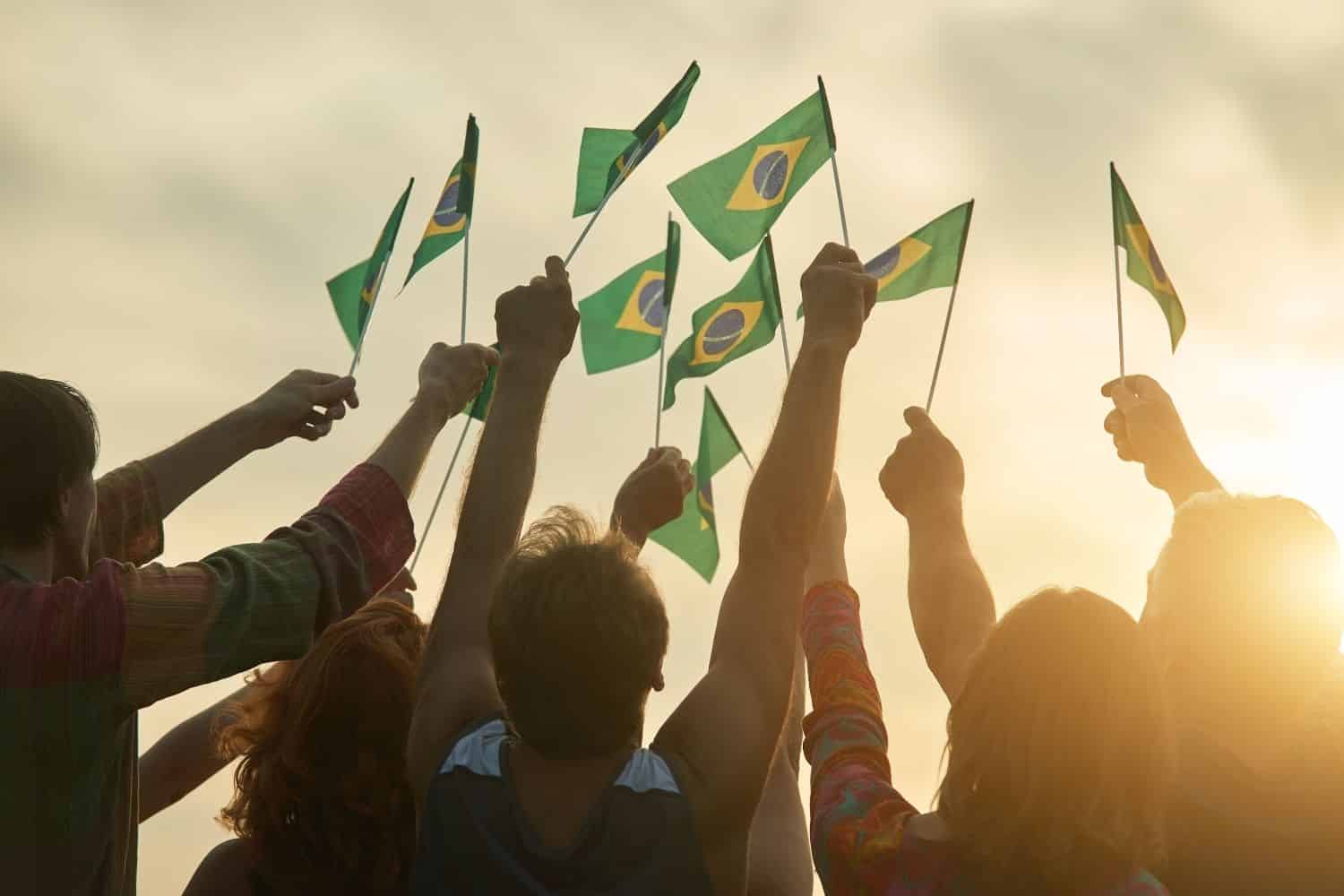
Respecting the proper usage and display of the Brazilian flag is of utmost importance. Understanding flag etiquette is essential, especially during national events and ceremonies. Learn about the protocols governing the handling, hoisting, and lowering of the flag. Discover the appropriate procedures for retiring or handling damaged flags, ensuring they are accorded the respect they deserve.
- Proper Handling: It is essential to handle the flag with care and respect. Avoid letting it touch the ground or floor, and hold it upright without dragging.
- Hoisting and Lowering: The flag should be hoisted briskly and lowered ceremoniously. It is customary to hoist the flag at sunrise and lower it at sunset, following specific guidelines or occasions.
- Displaying the Flag: When displaying the flag vertically, the green field should be on the left, followed by the yellow diamond in the center and the blue globe with stars on the right. Ensure the flag is freely flown and not entangled or obstructed.
- Half-Staff: Lowering the flag to half-staff is a gesture of mourning or respect. This should be done on specific days of remembrance or as directed by authorities to honor national tragedies or the passing of significant figures.
- Flag Retirement: When a flag becomes damaged, torn, or worn out, it should be retired in a dignified manner. Follow appropriate guidelines and local regulations for retiring the flag, which may include burning it in a respectful and solemn ceremony.
- Flag Size and Placement: The size of the flag displayed should be proportionate to the flagpole or display area. Consult local guidelines or authorities for specific rules regarding flag size and placement.
- Respectful Disposal: If a flag cannot be retired through burning, it should be disposed of in a respectful manner. Consider burying it or handing it over to authorized organizations that specialize in flag disposal.
Interesting Facts and Trivia
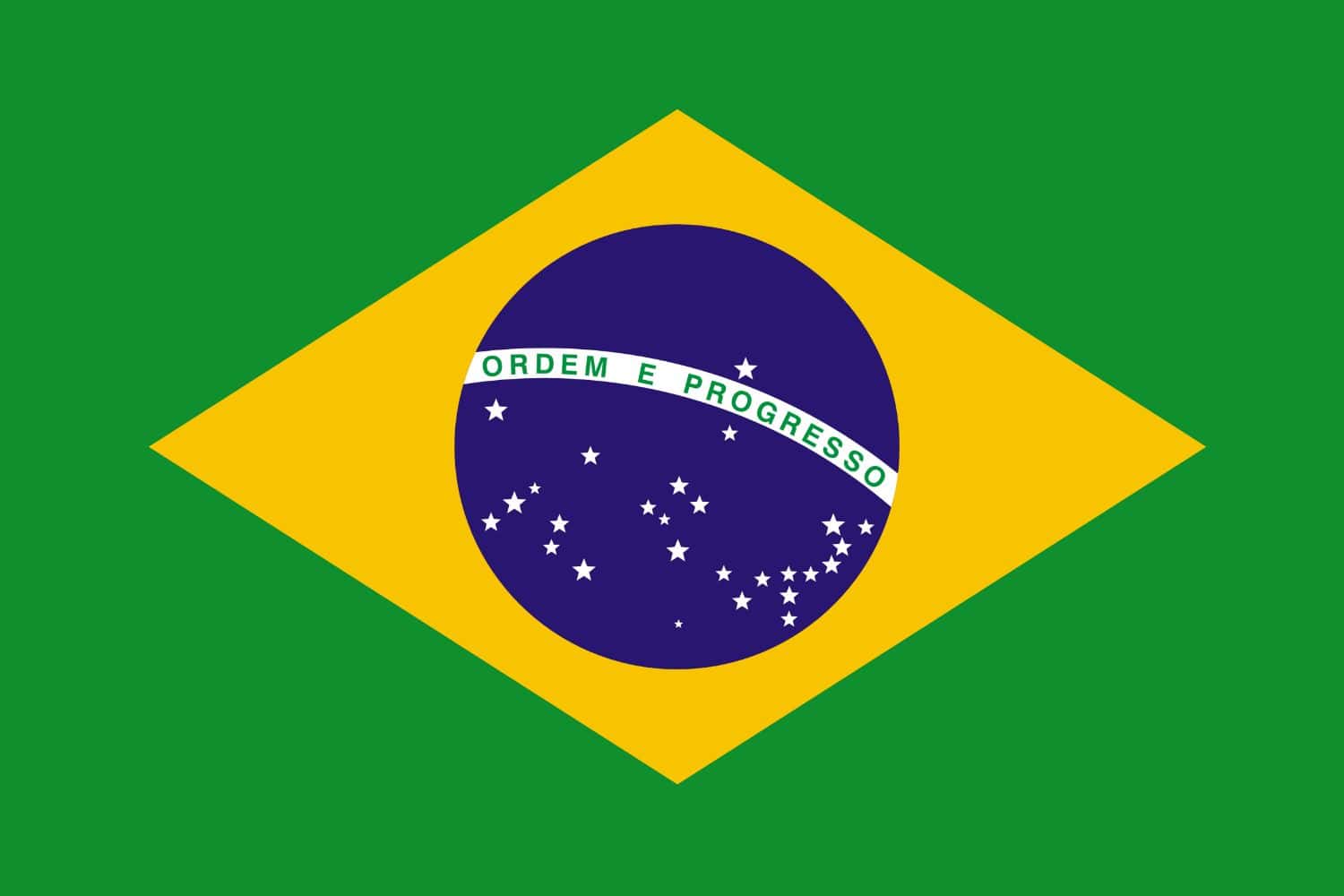
Dive into the intriguing details and lesser-known trivia about the Brazilian flag. Explore the distinctive elements of the flag’s design that carry symbolic meanings. Learn about significant incidents or events related to the flag that have made a lasting impact on Brazil’s national history and identity.
Rich Tapestry of History
- 1889: The current design of the Brazilian flag is adopted on November 19, symbolizing the country’s republicanism and its diverse natural and cultural heritage.
- Colors and Symbolism: The green background represents the lush forests of Brazil, symbolizing growth and hope, while the yellow rhombus stands for the country’s wealth and natural resources. The blue globe with stars reflects the sky over Rio de Janeiro on the night of November 15, 1889, symbolizing the union of the states under a federative system.
- Stars and Globe: The 27 stars on the flag represent the federative units of Brazil and the constellation in which they are arranged suggests Brazil’s aspirations towards progress. The Southern Cross, prominent among these stars, highlights Brazil’s geographical and astronomical identity.
- National Identity: The Brazilian flag embodies the country’s vast diversity, rich resources, and the aspirations of its people for democratic governance and societal progress.
These historical insights underscore crucial moments in the history of the Brazilian flag, illustrating its role in shaping Brazil’s national identity and symbolizing its aspirations and challenges over the years.
Flag-Related Symbols and Emblems
A flag is more than just a piece of cloth—it represents a nation’s identity. Delve into the additional national symbols and emblems that are closely associated with Brazil, understanding their significance and how they relate to the flag. Explore their historical and cultural roots, further enriching your appreciation of Brazil’s heritage. Visiting Brazil’s iconic destinations offers a firsthand experience of these symbols in their natural context.
Symbolisms of the Brazilian Flag
The Brazilian flag is imbued with multiple symbolic elements that echo the nation’s history, values, and aspirations. Here are the symbolisms of the Brazilian flag presented in itemized form:
- Green Color: Symbolizes the lush forests of Brazil, representing growth, nature, and hope. It’s a nod to Brazil’s vast natural resources and its commitment to environmental preservation.
- Yellow Rhombus: Represents the gold reserves once found in Brazil, and more broadly, the wealth of the nation’s land and its natural resources. This color signifies the optimism and prosperity of Brazil.
- Blue Globe and Stars: The blue globe depicts the sky over Rio de Janeiro at the proclamation of the Republic, reflecting the country’s democratic values. The 27 stars represent each state and the Federal District, symbolizing unity and federalism.
- National Identity: The flag serves as a unifying symbol that ties together Brazil’s diverse cultures, landscapes, and peoples under one nation.
- National Aspirations: Through its design and elements, the flag encapsulates Brazil’s aspirations for progress and harmony among its diverse states and territories.
These symbolisms in the flag contribute to Brazil’s sense of identity and pride, reflecting its historical journey and cultural significance.
Flags of Similar Countries or Regions
Examining the flags of countries or regions near Brazil can provide fascinating insights. This comparison delves into the similarities and differences in the designs, colors, and symbolism of these flags, uncovering historical and cultural connections that reveal shared influences or unique identities.
Brazilian Flag vs Argentine Flag
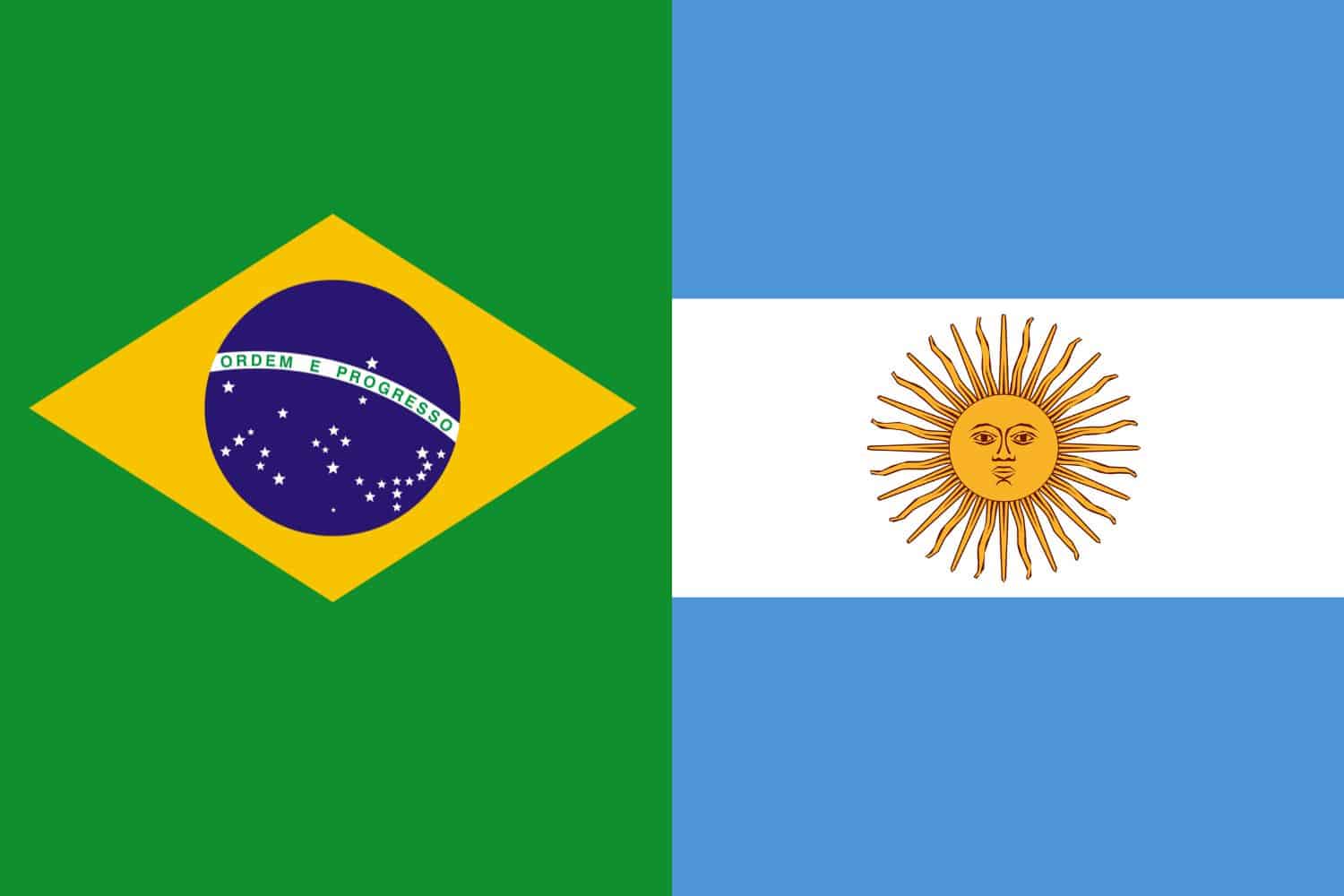
Similarity: Both flags prominently feature blue, conveying a sense of liberty and sovereignty.
Difference: The Argentine flag consists of three horizontal bands (two blue and one white) with a Sun of May in the center, whereas the Brazilian flag features a green field with a yellow rhombus and a blue globe.
Brazilian Flag vs Venezuelan Flag
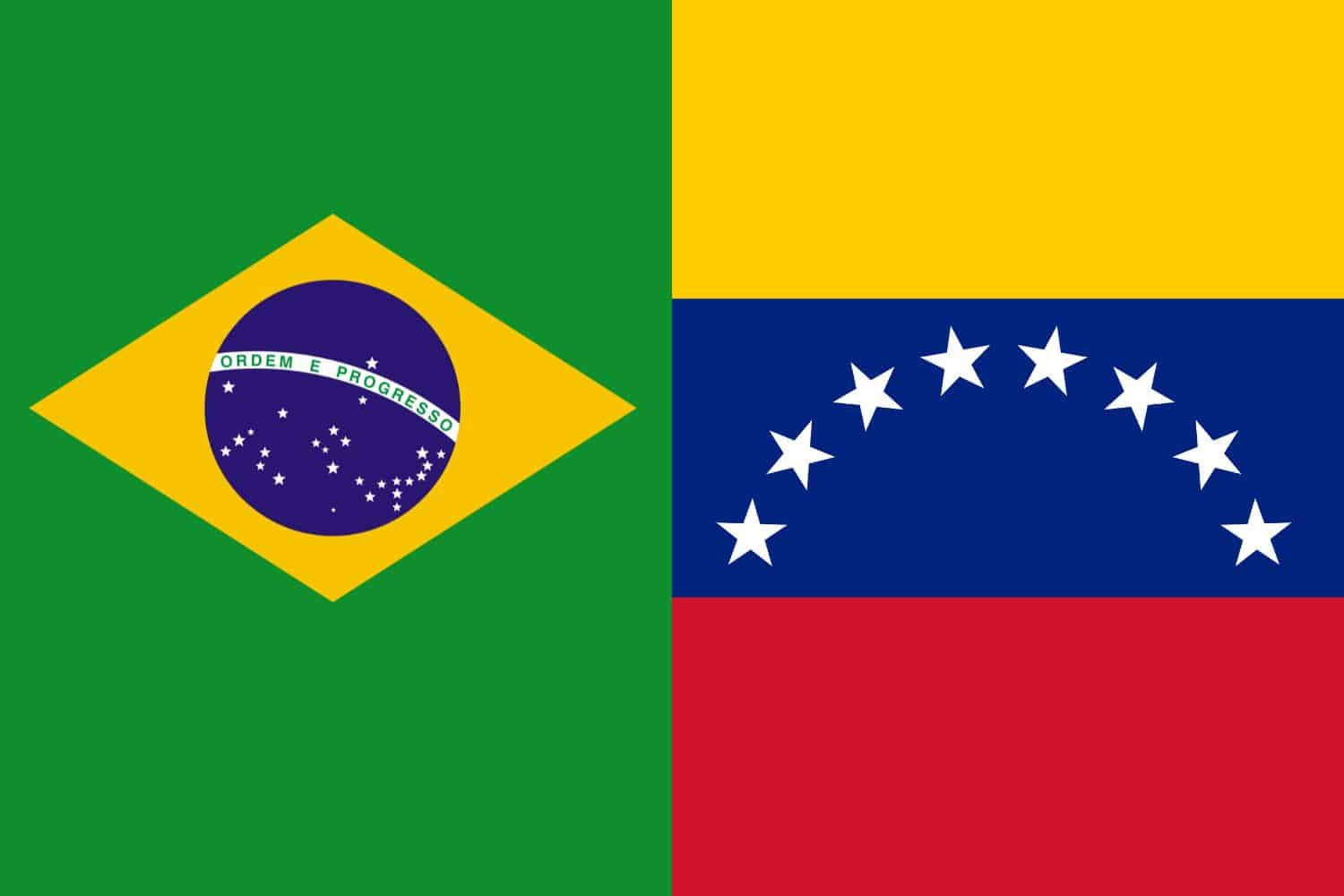
Similarity: Both flags use a blue color, symbolizing freedom.
Difference: The Venezuelan flag has three horizontal stripes (yellow, blue, red) with a group of stars, contrasting with Brazil’s more complex symbolism of a blue globe with stars on a yellow rhombus.
Brazilian Flag vs Colombian Flag

Similarity: Both flags include yellow, representing the wealth and resources of the countries.
Difference: The Colombian flag is composed of three horizontal bands (yellow, blue, red) without any additional emblems, unlike Brazil’s flag which includes a blue globe with stars.
Brazilian Flag vs Paraguayan Flag

Similarity: Both flags feature stars, which represent the states or regions of the country.
Difference: The Paraguayan flag is unique in having a different emblem on each side; one side displays the national coat of arms, and the other the seal of the treasury.
Frequently Asked Questions (FAQs)
Explore answers to common questions related to the Brazilian flag. From its historical origins to the symbolism behind its elements, find concise and informative responses that address inquiries commonly posed by those curious about Brazil’s flag.
What are the colors of the Brazilian flag?
The Brazilian flag consists of green, yellow, blue, and white colors.
What do the colors green and yellow represent on the Brazilian flag?
Green symbolizes Brazil’s lush forests and fields, while yellow represents its wealth in gold and other natural resources.
What is depicted on the blue globe on the Brazilian flag?
The blue globe on the Brazilian flag represents the sky over Rio de Janeiro on the morning of November 15, 1889, the date of the proclamation of the Republic of Brazil.
How many stars are there on the Brazilian flag and what do they represent?
There are 27 stars on the Brazilian flag, each representing a Brazilian state and the Federal District.
What is the significance of the white band on the Brazilian flag?
The white band represents peace and unity among the Brazilian people.
Why does the Brazilian flag feature a yellow diamond?
The yellow diamond on the Brazilian flag represents the wealth of Brazil, particularly in minerals such as gold.
Who designed the Brazilian flag?
The Brazilian flag was designed by Raimundo Teixeira Mendes and Miguel Lemos, with input from Manuel Pereira Reis, in 1889.
What do the 27 stars on the Brazilian flag’s blue globe represent?
The 27 stars represent the constellations visible in the southern hemisphere over Brazil’s capital city, Brasília, on the date of its foundation, April 21, 1960.
